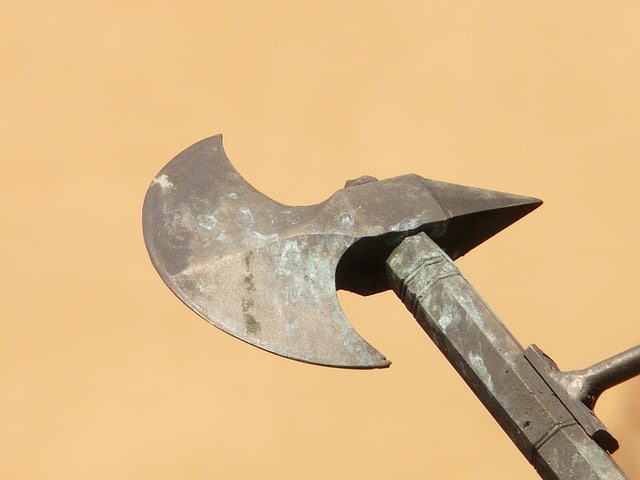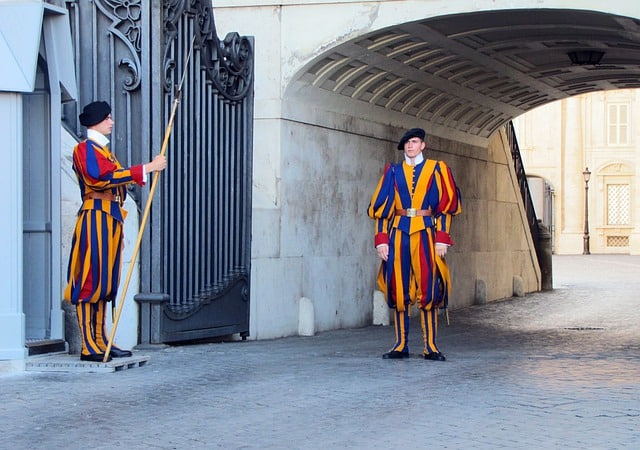
Here you can see its characteristic shapes, such as its semicircular blade
Halberd is a term with an extensive etymological journey. Its most distant origins are found in the Germanic word helmbart , which derived from the Middle High German helmbarte : this concept , in turn, is formed with helm (translatable as "handle" ) and barte (which translates as "axe" ). .
Features of the halberd
Helmbarte derived from the French hallebarde and the Italian halberd . Thus we come to our language , where the idea refers to a weapon formed by a long handle with a point and a transverse blade that has a crescent appearance on one side and a sharp end on the other.
The shaft of the halberd can measure up to two meters. At the end, there is a spear -type tip and a blade with an ax blade in one sector and a kind of hook in the other. The models from the 16th and 17th centuries, a time when the title of halberdier arose to name the sergeants who used it, had a shorter shaft.
As a curious fact, in Christianity we also find this polearm in the iconography referring to the apostle Judas Thaddeus , as an attribute of his. This means that by means of the halberd it is possible to identify this saint. Attributes were widely used to facilitate the transmission of religious messages to people who could not read.
Its origins
It is estimated that halberds were born in Chinese territory, since there is evidence of polearms of considerable antiquity whose functions were very similar. On the European continent it began to develop in the Middle Ages , around the 14th century, through Scandinavia and Germany, a time when it adopted its most characteristic features.
However, it became especially popular thanks to its use by Swiss mercenaries , soldiers who were known for serving in the armies of other nations, particularly those belonging to the French crown.
Reaching the end of the Middle Ages , halberds were frequently used in infantry, maintaining that significance until the 17th century . Infantry with halberds even prevailed over heavy cavalry in different historical confrontations.
The popularity of the halberd was so great that numerous elite troops belonging to the nobility carried it in highly ornate versions, something that continues to this day. We can mention other polearms that coexisted with the halberd and that could be considered within the same family, such as the partsan, the archa and the glaive . In feudal Japan, on the other hand, they created the naginata , whose blade was thinner and more aerodynamic.
Currently
Currently, halberds are often shown off in parades and at various public events. In these cases, they are displayed as ceremonial weapons , although there are also formations that use them as combat weapons , to the point of using them in their training. This happens with the so-called halberdiers of the Pontifical Swiss Guard and the Spanish Royal Guard .

The halberd is present in the Pontifical Swiss Guard
The Pontifical Swiss Guard is a military body that is responsible for providing protection to the Pope , its chief of ceremonies, and the Holy See. Today it has a number of soldiers around one hundred, which makes it the least numerous professional army in the world . It emerged in the 16th century, more precisely in the year 1506, with 150 soldiers.
Regarding the Company of Royal Halberdier Guards , it is in charge of protecting the castles (the alcázares ) and accompanying the Kings every time they go on excursions or participate in public events. This has been very common in the monarchies of Europe. Before Switzerland, for example, Denmark did it, and little by little other European countries joined in.
